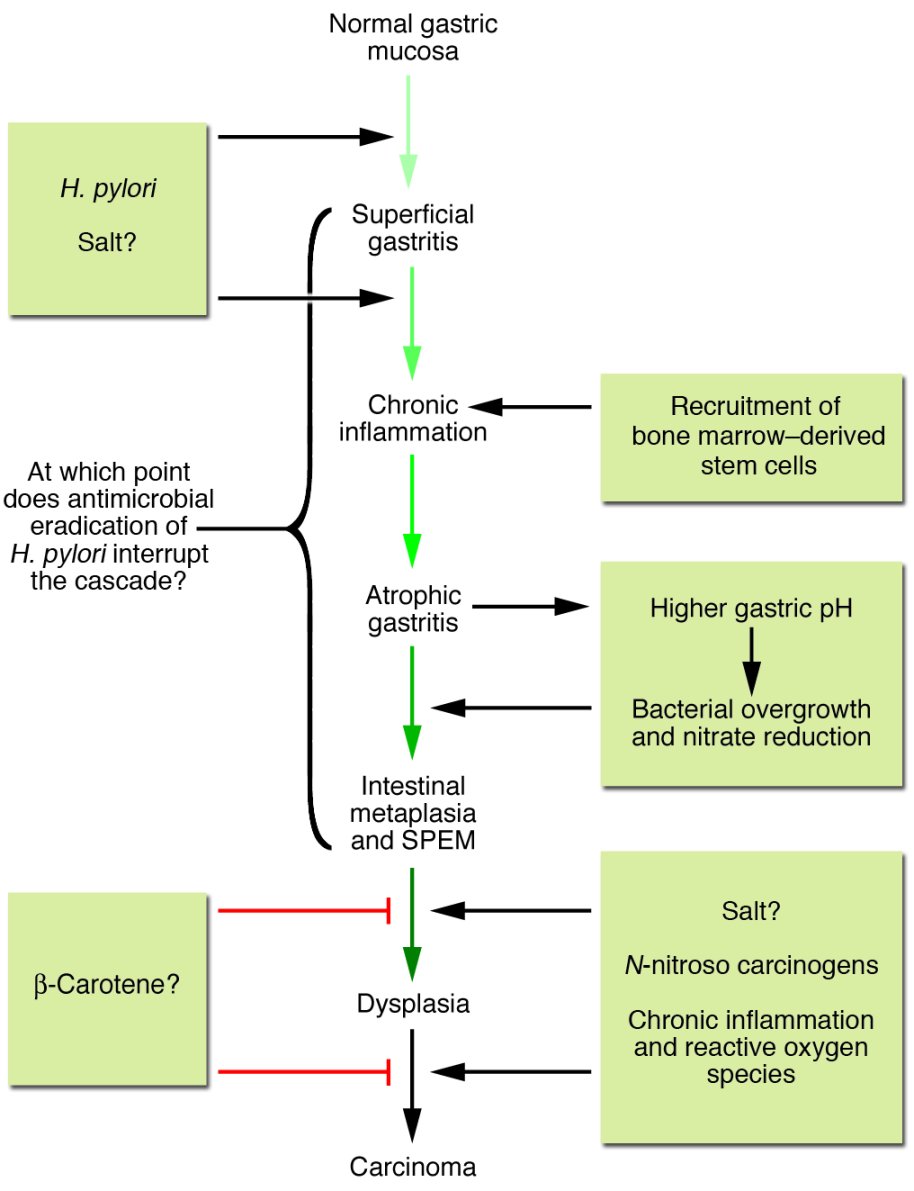Correa pathway
Contents
Correa pathway explains
A. Metabolism of lipids in G.I Tract
B. Gastric cancers development after long-term Helicobacter pylori infection
C. Cholesterol Metabolism
D. Bile acids and colon cancer mechanism
Which of thr following is the critical step in developing cancer
A. Acute Gastritis
B. Chronic Gastritis
C. Atrophic gastritis
D. Gastric ulcer
Most common cause of chronic gastritis worldwide is
A. H.pylori
B. Alcohol
C. NSAIDs
D. Stress
Correa pathway
- Describes the distinct steps in the changes occurring from normal tissue to gastric cancer.
- Initially – normal gastric mucosa,
- which develops into – superficial gastritis[ perhaps under the influence of H. pylori or salt]
- Next – chronic inflammation
- gradually occurs and recruits various immune cells.
- Next – Atrophic gastritis – after certain histologic changes occur.
- Next – Achlorhydria and Hyper-gastrinemia
- Bacterial overgrowth occurs during this phase because of the achlorhydria and hyper-gastrinemia.
- The development of atrophic gastritis is the critical step in developing cancer.
- Next – Metaplastic mucosal cells
- Next – Dysplastic changes
- The mucosal cells then undergo metaplastic followed by dysplastic changes.
- Next – Carcinoma
- Carcinoma ultimately develops as a result of these alterations.

Available from: https://www.researchgate.net/figure/Progressive-pathway-to-Gastric-Cancer-First-proposed-by-Correa-this-schematic-diagram_fig1_268874325
What is the mechanism of Gastritis in case of Infection with Helicobacter pylori?
- H. pylori secretes urease – causing conversion of urea to ammonia,
- That neutralize hydrochloric acid in the stomach.
- G cells in the gastric antrum produce gastrin, which is inhibited by the normally acidic environment of the
stomach. The loss of a low pH diminishes the negative feedback mechanism - That leads to – elevated gastrin levels
- Leads to chronic gastritis.
- Cellular atrophy.
- Decreased somatostatin production.
- Somatostatin is responsible for inhibiting gastrin production.
- When this feedback is removed,
- Next – Achlorhydria and Hypergastrinemia






